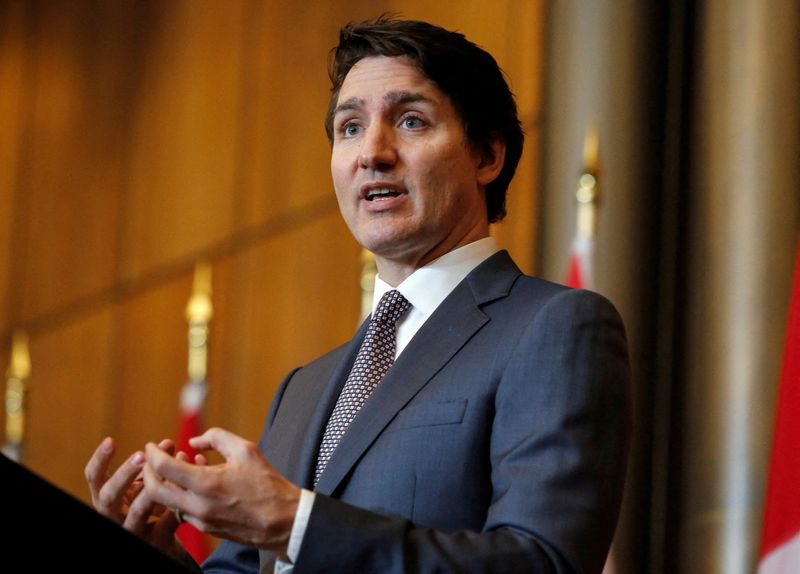By Julie Gordon
OTTAWA (Reuters) -Canada's Liberals find themselves in a bind ahead of this week's budget: the economy has recovered from the pandemic, yet Prime Minister Justin Trudeau has pledged billions in new stimulus, a political poker chip that could further torch runaway inflation.
Trudeau's Liberals will present their 2022 budget on Thursday, just seven months after promising C$78 billion ($62.7 billion) in new spending in a re-election campaign. Much of that, to be spread over five years, has not yet been budgeted.
But fresh fiscal spending could be risky at a time when inflation is already running at a 30-year high. If too broad, measures could fuel further price increases and end up hurting lower-income Canadians.
"When you look at the impact of this elevated inflation on lower-income households, clearly they are hurting," said Rebekah Young, director of fiscal & provincial economics at Scotiabank.
"But at the same time, from an economic perspective, there's a risk that if you put even more money at the problem, it can create more pressures."
Young said major new spending initiatives should be set aside for the near term, even though total government revenues are expected to be higher than previously forecast due to higher inflation-linked tax revenue.
But that may be easier said than done. The government has already committed to spend more on defense following Russia's invasion of Ukraine. Trudeau's Liberals currently spend less than 1.4% of GDP on defence, under the NATO threshold of 2%.
The budget will also include about C$2 billion on a strategy to accelerate Canada's production and processing of critical minerals needed for the electric vehicle supply chain, Reuters reported exclusively on Monday.
Green technologies and initiatives on housing will be focal points of the budget, said one senior source.
And the Liberals will have to start to deliver a national dental-care program for low-income Canadians - a costly initiative that is a cornerstone of a support deal with the New Democrats meant to keep Trudeau in power until 2025.
Structural spending will end up adding to the deficit once the stronger than expected revenues are no longer rolling in.
This could derail efforts to reduce Canada's debt-to-GDP ratio, which skyrocketed during the pandemic amid extraordinary emergency spending and was last forecast to peak at 48.0% this year.
"Any near-term drop in the federal deficit from today's improved economic outlook could be fleeting. As such, we feel the risks to our baseline debt-to-GDP forecast are very much skewed to the upside," said Randall Bartlett, senior director of Canadian economics at Desjardins.
Rising interest rates - the Bank of Canada is widely expected to hike its policy rate by 50 basis points to 1% at a decision on April 13 - will add to debt pressures. Canada's federal debt was last forecast to top C$1.19 trillion this year.
Trudeau, facing backlash over surging home prices and rents, has also promised to make housing more affordable, including measures to make it easier for first-time buyers to get into the market.

"That does get us into a problem where typically the prices just adjust to reflect the improvement in affordability," said Stephen Brown, senior Canada economist at Capital Economics.
($1 = 1.2449 Canadian dollars)